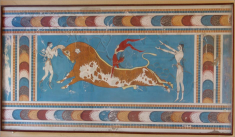Speaker
Description
Detecting cosmic rays at ultra-high energies exploits the calorimetric properties of the Earth's atmosphere, yielding extended particle showers with billions of secondary particles. Besides the direction and energy of the showers, determining the cosmic ray mass is an important objective for understanding the origin of these cosmic messengers and their acceleration mechanisms. Two mass-sensitive observables are the muon content and the depth of the shower maximum, both of which are encoded in the signal traces recorded with the ground-based water-Cherenkov detectors of the Pierre Auger Observatory. To decode the mass information from the traces, deep neural networks that use the concepts of recurrent and convolutional neural networks to exploit the data structure and symmetries of the detectors are employed. Trained on simulations, these networks predict the muon signal and depth of the shower maximum, respectively. The performance of the networks is evaluated on data and cross-checked with other detection methods. For the reconstruction of the depth of the shower maximum, the resolution reaches $25\mathrm{g}/\mathrm{cm}^2$, while the resolution of the muon signal ranges from 20% to 10%, depending on the zenith angle. Due to the duty cycle of nearly 100%, the number of events to be analyzed with the water-Cherenkov array yields a statistical power that is far superior to previous analyses. Thus, the application of deep learning provides an important step toward new insights into the mass composition of ultra-high-energy cosmic rays.
Details
Niklas Langner, RWTH Aachen University, Germany, https://www.institut3a.physik.rwth-aachen.de/
| Is this abstract from experiment? | Yes |
|---|---|
| Name of experiment and experimental site | Pierre Auger Collaboration, Observatorio Pierre Auger, Av. San Martín Norte 304, 5613 Malargüe, Argentina |
| Is the speaker for that presentation defined? | Yes |
| Internet talk | Yes |
